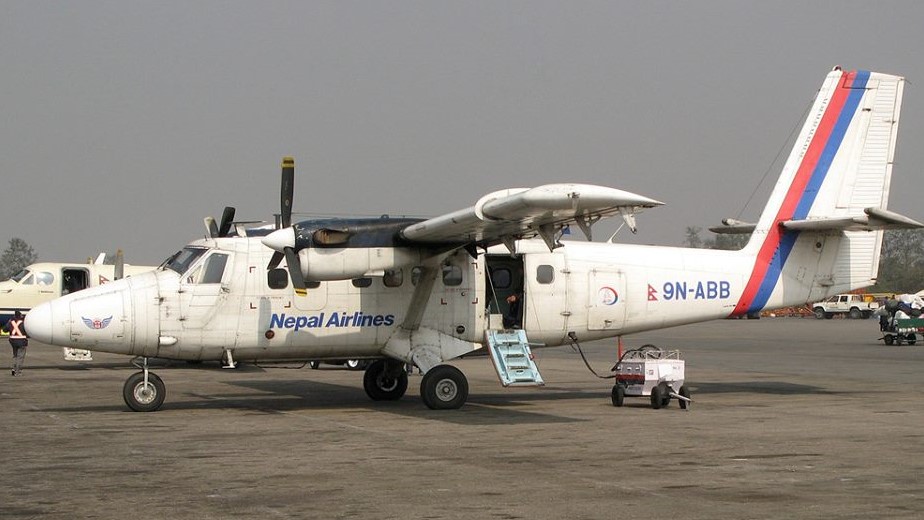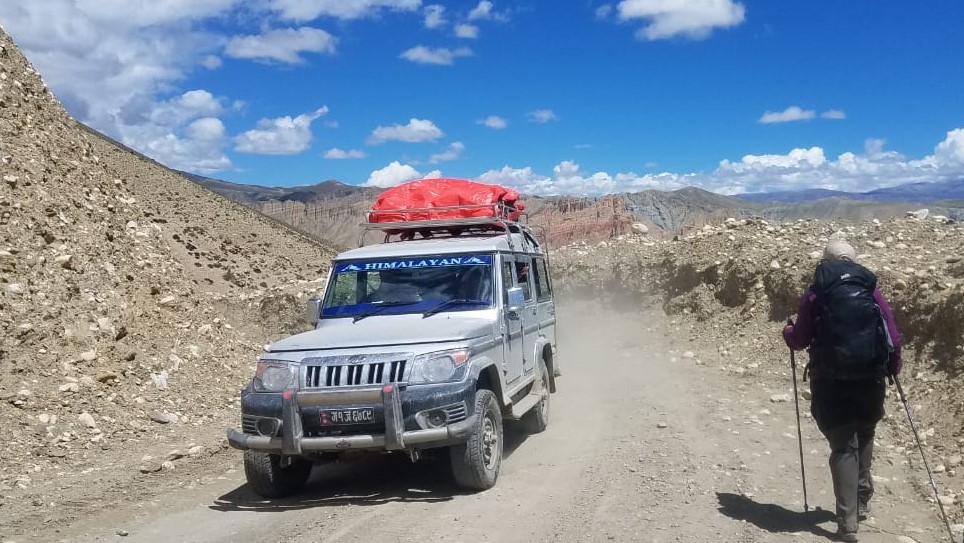BlogModes of Transportation during Nepal Trekking

12 Sep 2019 snowpath
Modes of Transportation during Nepal Trekking lists out all the available transportation types and their efficiency in different trekking regions of Nepal. Trekking regions in Nepal is divided according to National Parks and Conservation Area throughout the country from east to west. So, a trekker is entitled different modes of transportation during Nepal trekking depending upon trekking region. Kanchenjunga, Makalu- Barun, Sagarmatha (Everest), Langtang, Manaslu, Annapurna and Dolpo are some popular regions for trekking.
Here, we provide and suggest different modes of transportation during Nepal trekking, particularly around popular trekking region like Annapurna, Everest, Langtang and Manaslu. Tribhuvan International Airport of Nepal is the only one International Airport in Kathmandu. Basically, your trip starts at Kathmandu and ends at Kathmandu whichever trekking region you choose to trek.
Nepal is a landlocked mountainous country; thus, Nepal heavily relies on air and road transportation. There are (2) ropeways in operation. In Chandaragiri Kathmandu and Gorkha Manakamana. Unfortunately, there is no railway transport till date. Water transportation (small boats) is available only for local purposes particularly for fishing in southern part of the country where river is calm and big. Also, boats are used in big lakes for tourism purposes like one in Fewa Lake of Pokhara. More than highly elaborating transportation system throughout the country, here we emphasize on trekking.
Inside city like Kathmandu and Pokhara, trek organizer provides private luxury tourist vehicle (car, jeep, hiace, bus) according to the necessity. Usually, for airport transfers and sightseeing. Trekker can use taxi as well inside the city. Here we provide numerous possible modes of transportation during Nepal trekking, for different trekking regions. We have sorted out different trekking itinerary in same category, depending on similar types of available transportation. Most important, trekker most be highly cautious while driving in off-roads of Nepal, especially during monsoon. Knowing and choosing good modes of transportation during Nepal Trekking, is an integral part for a trekker.
1. Modes of Transportation in Annapurna Trekking.
Most of the Annapurna Trekking itinerary either starts or ends at Pokhara city. To go to Pokhara from Kathmandu, trekker can use different modes of transportation. Flight is fast and easy. For group of trekkers, driving in private car, jeep and HiAce can be a unique experience and fun in hilly region of the country. However, for single trekker the cost may skyrocket. Fixed early departure of tourist bus to Pokhara makes the travel easy and cheap for budget trip. Local bus is not highly recommended, since they can be old and slow. The standard level of local bus is poor. As well, the safety risks increase significantly. Traveller and trekker can use taxi inside Pokhara city. The same rule applies to return from Pokhara to Kathmandu. Using one-time flight, and another time road transportation, to and from Pokhara is also possible.
a. Annapurna Base Camp Trekking / Mardi Himal Trek / Khopra Danda Khayer Lake Trek / Ghorepani Ghandruk Circuit Trek
Above mentioned trekking itinerary starts at Pokhara and ends at Pokhara. From Pokhara, trek organizer arranges private vehicle according to necessity to reach Birethanti or Phedi depending on itinerary. To make trip short, some uses private/local jeep up to Kimche for Annapurna base camp trek. Same rule applies after completion of trek. Either you will be picked-up from Phedi or Birethanti after completion of the trekking. There is no road construction in these trekking regions. Chartering helicopter during emergency situation is the only way.
b. Annapurna Round Trek / Nar Phu valley Trek / Tilicho Lake Trek
These trekking itineraries generally starts from Besisahar. Road transportation is the only single option to reach Besisahar. Depending upon, the trekking itinerary can end at Besisahar or Kaligandaki valley (to Jomsom and ultimately to Pokhara). The extensive construction of road (gravel/ off-road) in both Marshyangdi valley and Kaligandaki valley means trekker can start and end trekking with numerous options. Driving most of the road section in private vehicle and local jeep has made Annapurna Round trek significantly short. However, Acute Mountain Sickness (AMS) should be addressed seriously before start of trek. For example, attempting Thorong-La pass upon driving up to Manang is never a good idea. Crossing Thorong-La pass and reaching Muktinath, again one can drive to Pokhara in jeep through Kaligandaki valley or walk to Jomsom and fly to Pokhara.
Nar Phu valley trek and Tilicho lake trekking also starts from Besisahar. Option of starting these trekking is same as Annapurna Round, however, some trekker instead of crossing Thorong-La pass, descends to Besisahar and drive to Kathmandu. As previously mentioned, trekker also can end these trekking either flying from Jomsom, or driving through Kaligandaki valley to Pokhara after crossing Thorong-la pass.
c. Kaligandaki valley Trek / Upper Mustang Trek
The reason to include Kaligandaki valley trek and Upper Mustang trek in single section, is due to focal point Jomsom Airport, the only operational airport in Annapurna trekking region. Plus, a single road (gravel / off-road) that connects Kaligandaki valley and Upper Mustang together. Afterall, Kaligandaki valley trek is also known as Lower Mustang Trek. Also, trekker drives through Kaligandaki valley to start upper Mustang trek in case flight from Pokhara to Jomsom gets cancelled.
Generally, Kaligandaki valley trek starts from Birethanti including Ghorepani and Poonhill. The trekking ends after flying from Jomsom to Pokhara. However, Upper Mustang trek starts from Jomsom and ends at Jomsom. In case of bad weather and no flight, trekker may need to drive in local jeep through Kaligandaki valley including Tatopani, Beni and finally to Pokhara or vice-versa.
2. Modes of Transportation in Everest Trekking.
All the trekking itinerary in Everest starts after flying to Lukla from Kathmandu. Except few trekker starts driving from Kathmandu to Jiri. Also, the trekking ends at Lukla. No access of road in Everest region means, the region heavily relies on regular scheduled domestic flights in everything, including food. Porters and mules contribute little by carrying loads to some destination within region. Helicopter is another means, which is expensive for regular use. So, is the reason, Everest is expensive comparatively to other trekking regions of Nepal.
Only few and limited scheduled flights, completely halts in case of bad weather. Lukla airport itself is vulnerable to weather. Weather in Lukla can change in span of 15 minutes. The vulnerable weather combined with enormous pressure for regular flights to Lukla, has maintained quite a bad reputation for accidents. But still, Everest is one the busiest trekking region of Nepal. Discussions closed.
3. Modes of Transportation in Langtang Trekking.
Connected by asphalt road and off-road (gravel) equally, the trekking has numerous points to start and end the trek in Langtang. Gatlang, Syabrubeshi, Dhunche, Sundarijal, Melamchi are well-known places. Private jeep, local jeep, local bus are the major modes of transportation to and from Kathmandu to Langtang. Hiring private jeeps can be little expensive, but trekker can have cosy and comfortable ride in off-road specially after Trishuli. No tourist bus service in Langtang. No air transportation as well, except chartered helicopters.
Langtang Tamang Heritage trekking starts from Syabrubeshi/Gatlang can end at Syabrubeshi/ Dhunche. Langtang valley trekking starts at Syabrubeshi can end at Syabrubeshi/Dhunche. Langtang Gosaikunda Helambu trekking starts from Syabrubeshi may end at Melamchi or Sundarijal. Numerous options and easy modes of transportation make Langtang trekking region one of the versatile trekking region of Nepal.
4. Modes of Transportation in Manaslu Round Trekking / Tsum Valley Trekking
Similar to Langtang trekking region, Manaslu trekking has no air transportation. As well no tourist bus service. Local bus, private jeep is the main mode of transportation. As well, trekker needs to drive equally in off-road and asphalt road to start Manaslu trekking. The trekking generally starts at Arughat or Soti Khola, but most trekker prefers Soti Khola. The construction of road is continuously stretching as far as Philim, yet no regular jeep or bus service around the region. Thus, the region has not as heavy traffic as Annapurna Round.
On the other side crossing Larkey pass, trekking joins to Dharapani, section of Annapurna Round well connected by road. Some trekker prefers to end trek at Dharapani and drive in jeep to Besisahar, while some likes to trek up to Syange and drive to Kathmandu. From Besisahar, trekker can use local bus, private car as per budget and level of comfort they want.
5. Modes of Transportation in Kanchenjunga Base Camp Trekking
The far-east region is one of the most expensive trekking regions of Nepal, because of transportation cost. If there is schedule flight to Suketar, that would be the best option to start Kanchenjunga base camp trekking. The other way is to fly to Bhadrapur and drive to Taplejung in off-road. Again, hiring private jeep can be pretty expensive for single trekker. Using a local bus can be cheaper. Instead of flying to Bhadrapur, one can drive through newly constructed (asphalt road) BP Highway, which takes 8-9 hrs from Kathmandu to Biratnagar. Next day drive to Taplejung and commence the Kanchenjunga trek.
The remote Kanchenjunga region has no extensive road construction within trekking region. In other hand, the trekking is more isolated, still remote and carries high legacy of actual trekking. Returning to Kathmandu after completing the trekking is just reciprocal of how trekker started the trek.
Note: Generally, off -road driving is quite risky in Nepal. Also, it is highly recommended to avoid as much as possible. Also, one need to ask and calculate actual efficiency on selecting modes of transportation during Nepal trekking. For example, driving through Kaligandaki valley is not as efficient as flying to Jomsom, unless trekker seeks alternative to save few money. Flight to Pokhara from Kathmandu is time-saving, money saving option for a single trekker than hiring private car. Without doubt, we provide appropriate modes of transportation during Nepal trekking for trekkers depending upon itinerary and trekking region. However, we advise trekker to know and understand general ideas on transportation modes during trekking.

